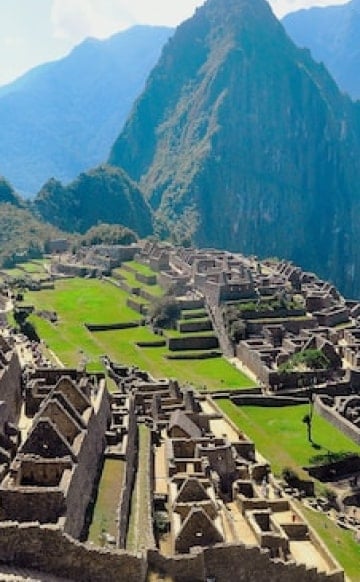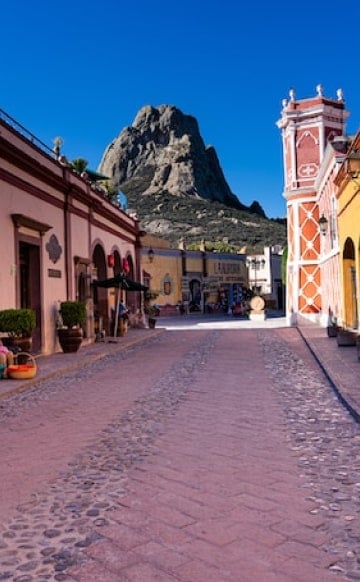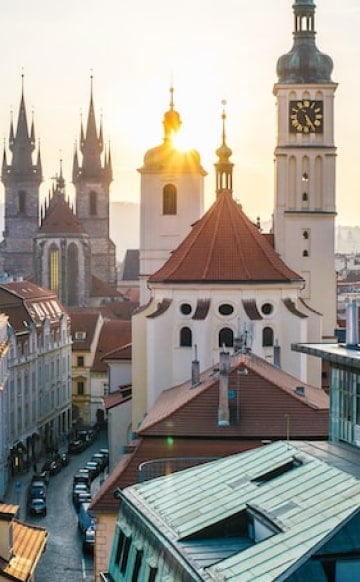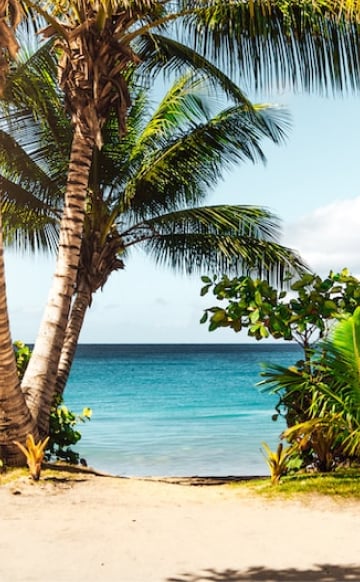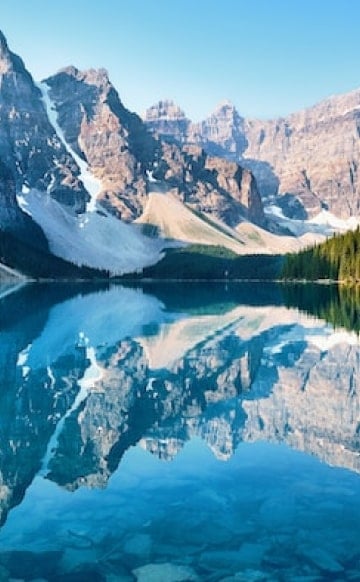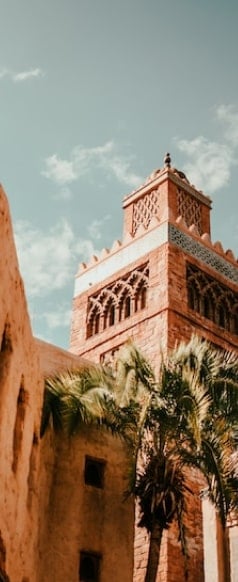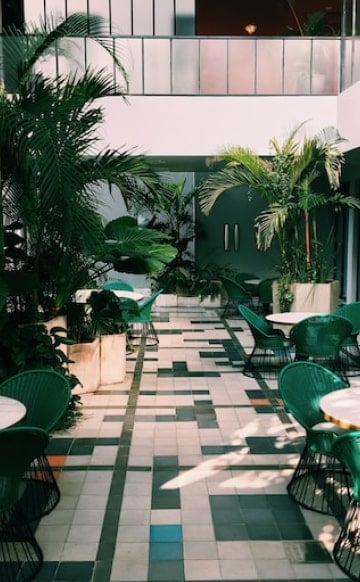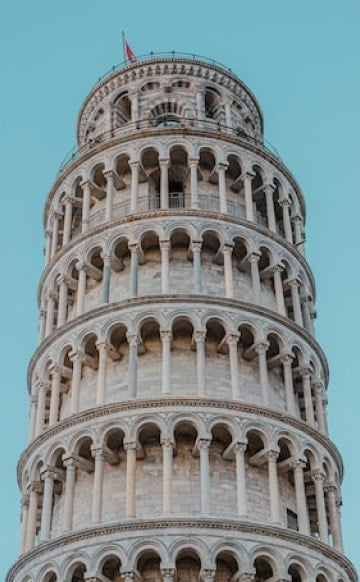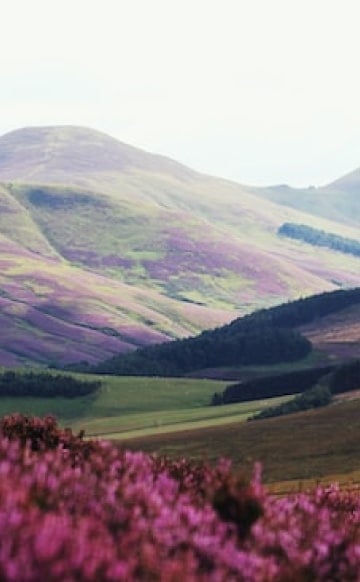If you’re dreaming of visiting one of those picture-perfect European towns filled with old-world charm, incredible scenic beauty, or perhaps both, where do you begin your search for the best destinations? From the Norwegian fjords and the magnificent Alps to sun-splashed Greek isles and everything in between, here is a look at some of the most beautiful small towns in Europe.

Manarola, Italy
Manarola, Italy is one of the famed Cinque Terre towns, filled with an array of vibrant rainbow-colored homes carved right into an impenetrable wall of stone along the Mediterranean coast. This charming fishing town is famous for its fabulous wine, particularly Sciacchetra, and the paintings of Antonio Discovolors, an artist who fell in love with Manarola and devoted much of his later works to the region. There are no cars here, no traffic lights, no screeching of tires, and no blasting horns. You can drive to Manarola, but you’ll have to park just outside the town and then take a shuttle bus or walk in on foot.

Garmisch-Partenkirchen, Bavaria, Germany
Garmisch-Partenkirchen is an enchanting Bavarian mountain resort town, just 80 minutes by train from Munich. Once two separate towns, one Roman and the other Teutonic, the 1936 Winter Olympics forced them to combine, though the two sides still have distinct personalities. Partenkirchen dates back to 15 AD, filled with narrow, cobblestoned streets lined with historic buildings in Bavarian Gasthaus style: three or four floors, swept open shutters and facades painted with pastel-colored imagery or pastoral, regional and religious scenes.

Portree, Scotland
One of the top small-town gems in Scotland, Portree is the largest town on Scotland’s Isle of Skye. It boasts a bustling port as well as a thriving cultural center, though the population is less than 2,500. The harbor is the focal point, featuring a number of pubs, seafood restaurants and spectacular views across the bay. It’s one of the best places to base your stay if you plan to explore this incredibly scenic wild region, due to its close proximity to some of the most breathtaking and unique attractions, including rock formations like the Old Man of Storr, Kilt Rock, and the extraordinary pinnacles of the Quaraing.

Reine, Norway
Reine is a tiny fishing village on the picturesque arctic island of Moskenesoya with a population of just a little over 300, though it was rightfully voted Norway’s most beautiful village. Set north of the Arctic Circle in the Lofoten archipelago, this remote wilderness region features sapphire bays that sit at the edge of breathtaking mountains and towering fjords. Many of the bright red rorbuer, or fishermen’s cabins, have been transformed into cozy visitor cottages with direct access to the Norwegian Sea as well as amazing night sky vistas, including the mesmerizing Northern Lights.

Colmar, France
Colmar, France dates back to the 9th century. Since then, it’s often been referred to as “Little Venice” due to the waterways that wind through medieval streets. This well-preserved Alsatian village is also considered the capital of wine in the district, known for its exquisite aromas. It has both German and French influences – you’ll find local bakeries selling “kugelhopf” and croissants, while eateries often specialize in sauerkraut and foie gras. Various architectural styles can also be seen, from French Neo-Baroque to German Gothic.

Marsaxlokk, Malta
The vibrant trading port of Marsaxlokk was established in 900 BC when the Phoenicians first landed on Malta. Today, this picturesque town is the main supplier of fish to the island nation that sits in the Mediterranean Sea. It’s well known for its massive markets that are stocked with an extensive array of fish, including the local favorite, Lampuki. This is a rare Maltese seaside village in that it has no modern buildings to spoil its appeal. With such tranquil surroundings, including the traditional luzzu’s (fishing boats) that are built according to a design that dates back to the time of the Phoenicians, it’s a particularly charming place to visit.

Portmagee, Ireland
In a country filled with beautiful towns, Portmagee, is a standout, sitting on the Ring of Kerry on the southwest coast of Ireland. This postcard-perfect seaside fishing village features a row of brightly colored buildings along with a rich and colorful history. At The Bridge Bar, you’ll find live music many nights of the week along with fantastic food and a fine pint of Guinness. Portmagee is also the departure hub for trips to the awe-inspiring Skelligs Rock, the home of preserved monastic settlements dating back to the 6th century.

Bled, Slovenia
Sheltered by magnificent mountains, Bled was established in 1004, considered so beautiful by the Holy Roman Emperor that it was gifted to the Bishop of Brixen. Bled Castle sits in the center of picturesque Lake Bled with its glacial blue waters surrounding the tiny island and bordering the town of about 5,000, renowned as the home of some of the most beautiful health spas in the region. Hiking to the medieval hilltop castle provides especially stunning panoramic vistas.

Hallstatt, Austria
Hallstatt is one of Austria’s oldest settlements, originally founded in 5000 BC in order to exploit the vast salt reserves in the mountains surrounding this storybook town. Thousands of years of salt mining translated into enduring prosperity for Hallstatt, which can be seen in its beautiful square ringed with ivy-covered buildings. The town still mines salt, but it is also considered a treasure trove of human history and one of Austria’s most picturesque towns, with its gorgeous setting on the bank of the Hallstätter See, between the pristine lake and a lush mountain, dramatically rising from water’s edge.

Bibury, England
Bibury, which sits among the hilly Cotswold region, is often called England’s most beautiful town, and it certainly holds a place among Europe’s best and brightest. It was first mentioned in the Domesday Book of 1086, retaining a place in the past ever since. Most of Bibury still stands as it did hundreds of years ago, with the River Coln continuing to dominate the main street, while lush meadows abut ancient stone cottages with steeply pitched roofs. Arlington Row is known as the most scenic area in town, with its lane of sepia-hued cottages built in the 17th century to house weavers working at Arlington Mill.

Annecy, France
One of the most charming towns in France, Annecy might even more stunning than the majestic French Alps that surround it. Just 22 miles from Geneva in the Upper Savoy region of eastern France, Annecy is divided by small canals and streams running from the brilliant blue Lac Annecy. Highlights include the popular terraces that line the canals, giving it a Venice-like feel, as well as the famous Palais de l’Isle, a picturesque 12th-century castle built right in the middle of one of the canals.

Goreme, Turkey
Goreme was first built during the Roman era, constructed amid the exquisite rock formations that dominate the area. The hard natural rock served as foundations and fortifications for those that built the town, and to this day, much of the ancient architecture still stands, with many of the churches carved directly into the rocks themselves. This beautiful town is something that truly must be seen to be believed, looking as if it could only exist in a fairytale. One of the best ways to see the surrealistic landscape is from above – and every morning just before sunrise, hundreds of hot air balloons are fired up across the region, floating above and around the rock formations.

Albarracín, Spain
Albarracín is a beautifully preserved medieval village in Northern Spain with roots dating back to the 11th century. The rock paintings in the cliff-foot caves of Albarracin Cultural Park provide some of the most important evidence of Levantine prehistoric art in the nation. A slice of medieval Span was preserved within the fortified walls of Albarracín, which is filled with winding lanes, narrow alleys, ancient stone towers, castles and chapels. Visiting here, you might just feel as if you’ve been instantly transported to the Middle Ages.

Pucisca, Croatia
Arguably the most beautiful village in Croatia, Pucisca, is certainly one of the most picturesque places in all of Europe. The gleaming white stone, indigent to the island of Brac, is what makes this small harbor town a truly one-of-a-kind destination, and even an exquisite work of art. Sitting on the northern coast of the island and sheltered by a protective cove, you can enjoy stretching out on pristine sands, soaking in the sunshine and taking a cool, refreshing dip in the sparkling Adriatic.

Vestmannaeyjar, Iceland
Vestmannaeyjar sits on the island of Heimaey, the largest of the 14 islands in the Westman Islands archipelago, just off the southwest coast of Iceland’s mainland. This geographical treasure trove is considered one of Iceland’s best-kept secrets, noted for its immense biodiversity, including 150 plant species not yet classified as well as millions of birds that nest in cliffs. Vestmannaeyjar is also one of the best places to see puffins.

Sintra, Portugal
In 1809, Lord Byron penned a letter to his friend Francis Hodgson, writing, “I must just observe that the village of Cintra in Estremadura is the most beautiful in the world.” This fairytale Portugal town sitting at the edge of Europe has charmed countless visitors for centuries. The Romans made it a place of cult moon worshiping, naming it “Cynthia” after the goddess of the moon. Since 1840, Pena Palace has been the highlight as one of Europe’s most fantastic palaces, surrounded by mystical Pena Park, filled with a variety of trees and exotic plants from the former colonies of the Portuguese empire, ponds, fountains, and black swans.

Burano, Italy
If you’re ever in need of a mood booster, this cheery Technicolor town that’s actually a tiny island in the Venetian lagoon should do the trick. Its bright colors pop out in a way that gives it a tropical feel, with all of the houses here following a particular color pattern that dates back to the island’s “golden age” when it was first created. Legend has it that local fisherman first painted their houses in these vivid colors so that they could be seen while they were out fishing. Residents are required to send a letter to the government if they want to paint their abode – officials will then reply with a list of colors that can be used. If the rules are broken and you use the wrong paint, you’ll get thrown in the pokey.

Giethoorn, Netherlands
If you’ve ever fantasized about living the simple life, this idyllic Dutch town located in the province of Overijssel may fit the bill. It has no roads, connected instead by a network of old-world canals, creating small private islands for each home. The only access is by water, or by foot over its picturesque wooden arch bridges. Locals use punters to get around, and motor vehicles have to remain outside the town. There are four miles of canals and farmhouses with thatched roofs that date back to the 18th century. It was founded by a group of fugitives from the Mediterranean region around 1230 AD, and became internationally renowned in 1958 when it was featured in the Dutch film “Fanfare.”

Èze, France
Eze is often described as an “eagle’s nest” due to its location overlooking a high cliff, nestled 1,400 feet above the Mediterranean Sea along the exotic French Riviera and is known worldwide for its jaw-dropping, panoramic views. The area has been populated since around 2,000 BC, occupied by the Roman Empire, Moors, Provenance and Savoy, with the oldest building in the village, Chapelle de la Sainte Croix, dating back to 1306.

Tenby, Wales
Tenby translates roughly to “little fortress of the fish,” in Welsh. The town, a naturally defended and bountiful harbor with access to the Irish Sea and the Atlantic Ocean, was founded in 900 AD. After the Norman Conquest of England, Tenby was fortified with a massive wall to hold local rebels at bay. For the past few centuries, this picturesque town has become more famous for its scenic beauty, rather than its defenses.

Folegandros, Greece
Santorini may be more well-known, but its neighbor Folegandros features similar architecture, including whitewashed buildings decorated with brightly colored flowers, streets paved in slates, and even Greek Orthodox churches with brilliant blue domes. The difference is, you won’t have to battle the crowds. On remote Katergo, a beautiful stretch of beach with gentle, azure-colored waves, you may even be able to enjoy a secluded swim.

Cesky Krumlov, Czechia
Cesky Krumlov is a small medieval town found in the South Bohemian region of the Czech Republic. It may not be a well-known tourist destination, but it’s certainly a hidden treasure just waiting to be discovered, and is likely to inspire as much as the famed capital of Prague. Set along the banks of the Vltava River, it was built around a 13th-century castle with Gothic, Renaissance and Baroque elements. Thanks to its peaceful evolution over more than five centuries, its beautiful architectural heritage has remained intact.

Gruyeres, Switzerland
Gruyeres is famous for its namesake cheese, with a mild, nutty flavor that melts so well in fondue. Few are familiar with the beautiful town, but this picturesque hamlet in the upper valley of the Saane River should be at least as well known for its scenic beauty. With a wide, stone-paved street leading up to a stunning 13th-century castle, as well as imposing fortifications and panoramic vistas of the surrounding Alpine foothills, it’s certainly a show stopper.

Dinant, Belgium
The city of Dinant, sandwiched between the Meuse River and its citadel, is known for its magnificent architecture and great views from the mountaintop fortress. Spend a day visiting the waterfalls of the Grotto of Dinant or the Sanctuary of Beauraing, and then grab a table at any one of the local cafes while taking in the views from one of Belgium’s, and Europe’s, most beautiful small cities.

Telc, Czechia
This small town in south Moravia is filled with Baroque- and Renaissance-style facades with high gables painted in pale pastels now supporting small shops and cafes. This is another true fairytale-like town, with a romantic chateau and crystal-clear ponds surrounding it, and a square that looks as if it’s come straight out of the pages of Hans Christian Andersen. It’s one of the most perfect examples of the Italian Renaissance north of the Alps and has the distinction of housing one of the most beautiful squares in all of Europe.

Cochem, Germany
Cochem is one of the most charming towns in all of Germany, with legend, folklore and a rich history found in every nook and corner. Set in the scenic Mosel river valley between the Eifel and Hundsruck, it’s surrounded by steep vineyards and quaint wine villages. The soil and climate conditions make the Mosel Valley a prime area for cultivating the Riesling grapes that are used to produce some of Germany’s finest white wine, with numerous opportunities to stop and sample them available throughout this beautiful river valley.

Smogen, Sweden
Smogen, located on the west coast of Sweden, is known as one of the country’s most beautiful towns with a relaxed maritime atmosphere along with picturesque fisherman’s cottages and boats dotting the landing stage near the water. The village is an especially attractive mix of shops and boutiques in old seafront wooden houses, fronted by a quay that runs for nearly 1,000 feet. The community once straddled several islands that were lying so close together that space has since been filled and is now considered to be a single island.

